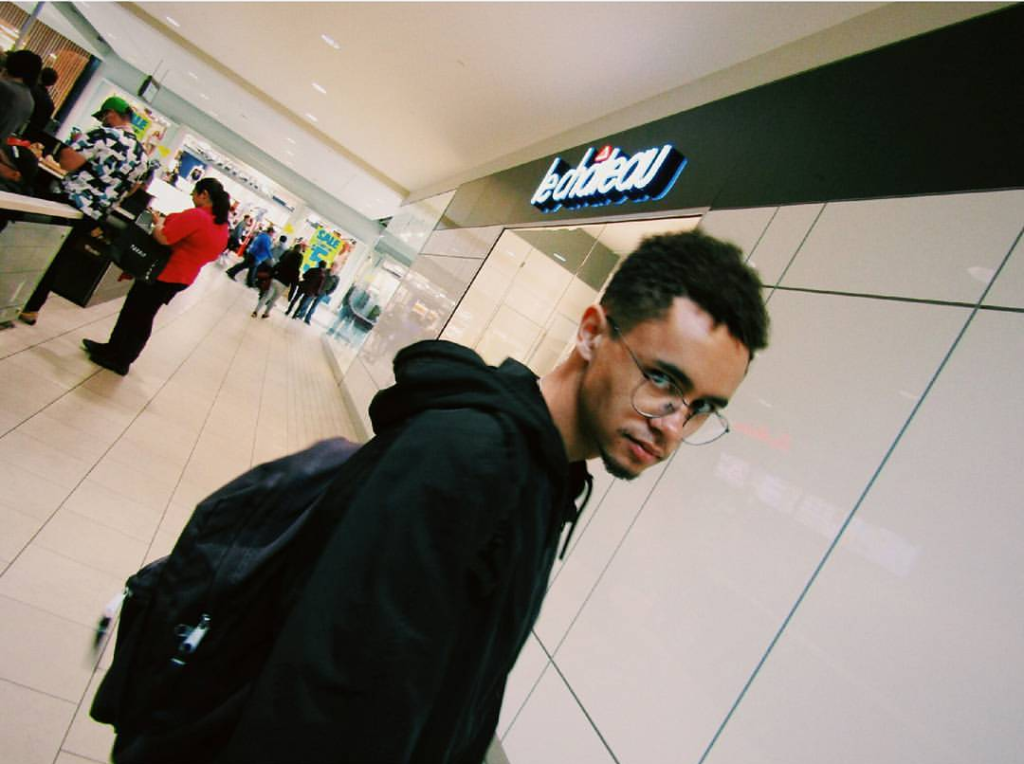5 th October , 2019
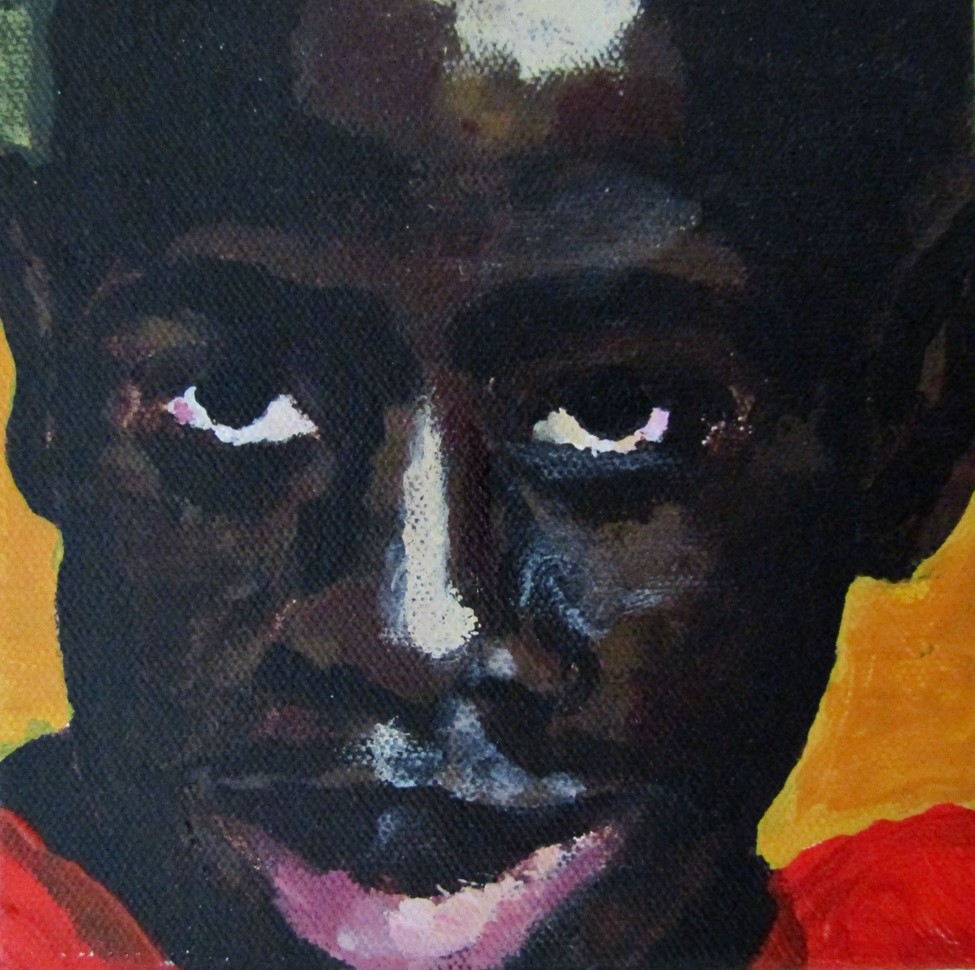
Preston Pavlis is an emerging artist based out of Edmonton, Alberta, Canada. He has completed MacEwan University’s Fine Arts Diploma Program and will continue his studies at the Alberta University of the Arts in Calgary. Pavlis’ work is a reconciliation between personal truth and layered histories. Working primarily through drawing, painting and textiles, Pavlis explores the ways in which
personal truth can be discovered through the peeling back of layers of internalized shame and fear. The resulting works are attempts to uncover the mystery and the joy that lie buried beneath one’s inability to understand oneself.
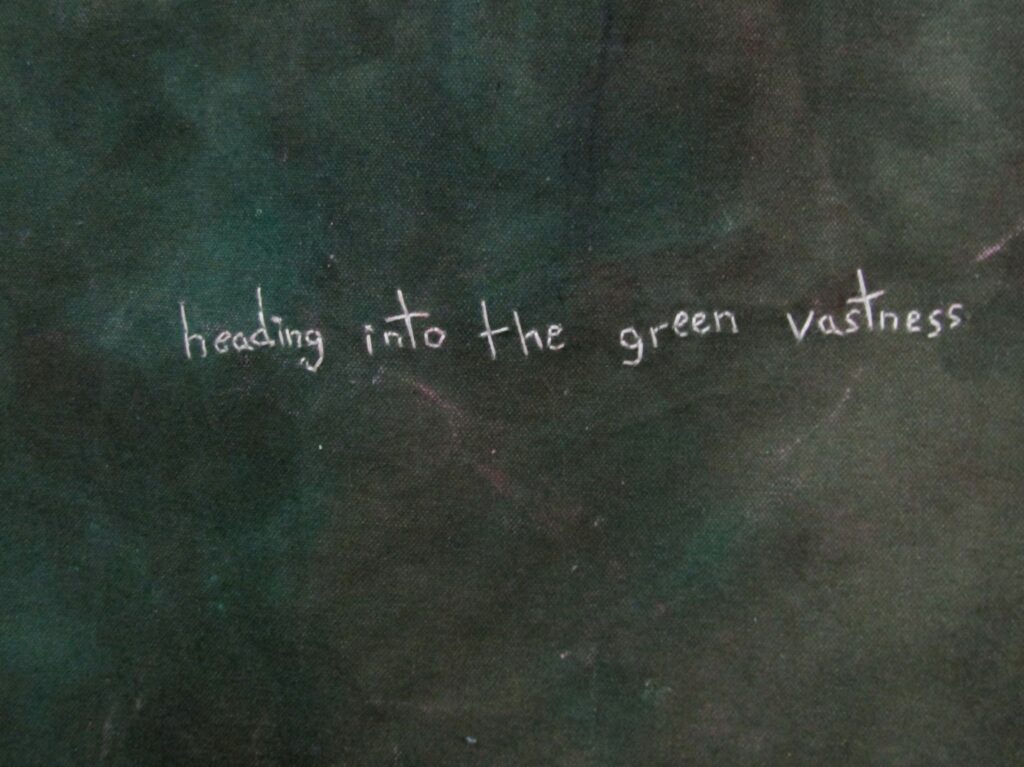
ArtX: Tell us about you as a person.
Preston Pavlis: My name is Preston Pavlis and I am an artist and a student based in Edmonton, Alberta, Canada. I was born in Loma Linda, California and was raised in the city of Highland before moving to Canada in June 2016.
How long have you been practicing art and when did you consider yourself a real artist?
I started making work after moving to Canada in mid-2016. Although I would not consider myself a professional artist yet, I am a student and the work that I make is very much grounded in the learning process. I am most fascinated by the history of painting and the inherent mysteries that lie at the center of constructed images.
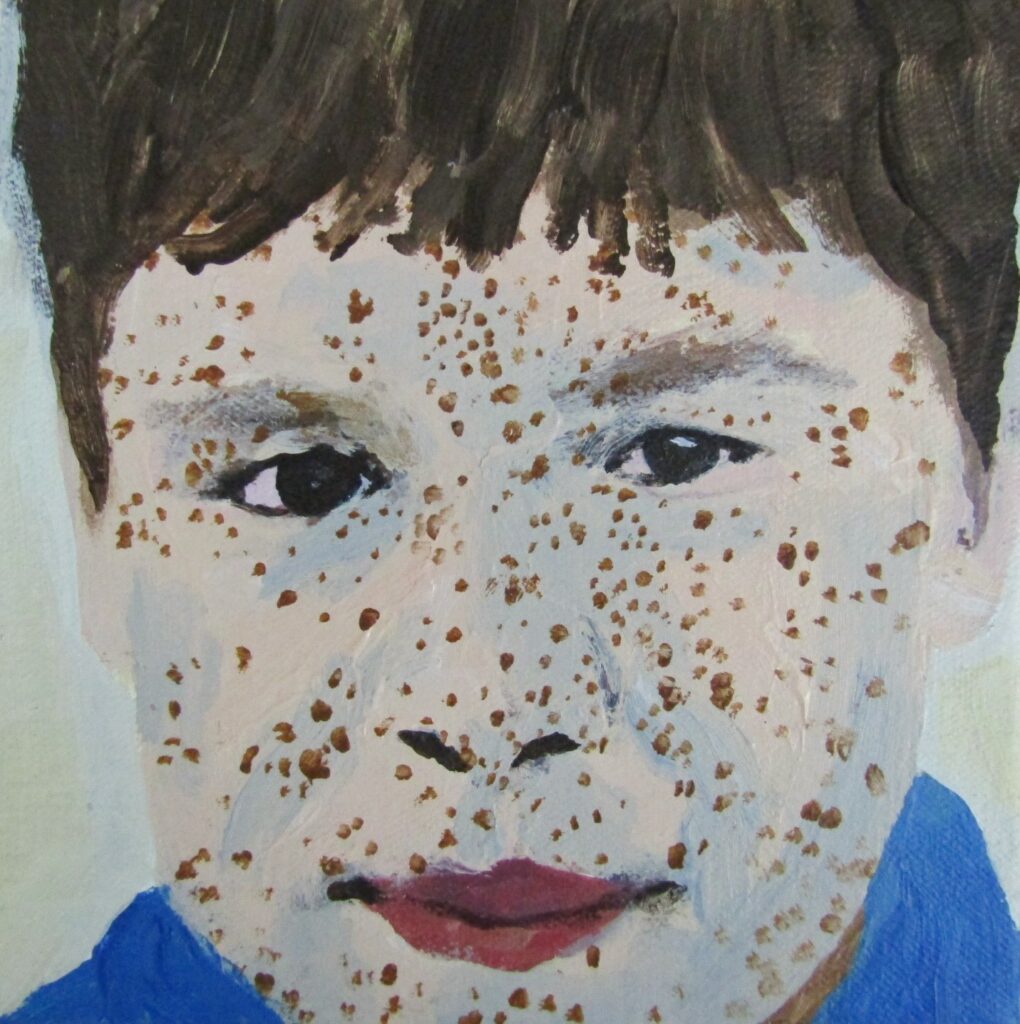
Tell us about your training, formal and informal.
I completed MacEwan University’s Fine Art Diploma Program in June 2019. I am planning on transferring to the Alberta University of the Arts in Calgary at the start of 2020 to work towards my BFA.
What mediums do you prefer to work in?
I prefer to work with acrylic paints on large sections of raw, unstretched canvas. I also incorporate textiles, embroidery, charcoal and oil pastels into the works. Simultaneously, I enjoy working on a smaller scale to enforce a juxtaposition between different pieces.
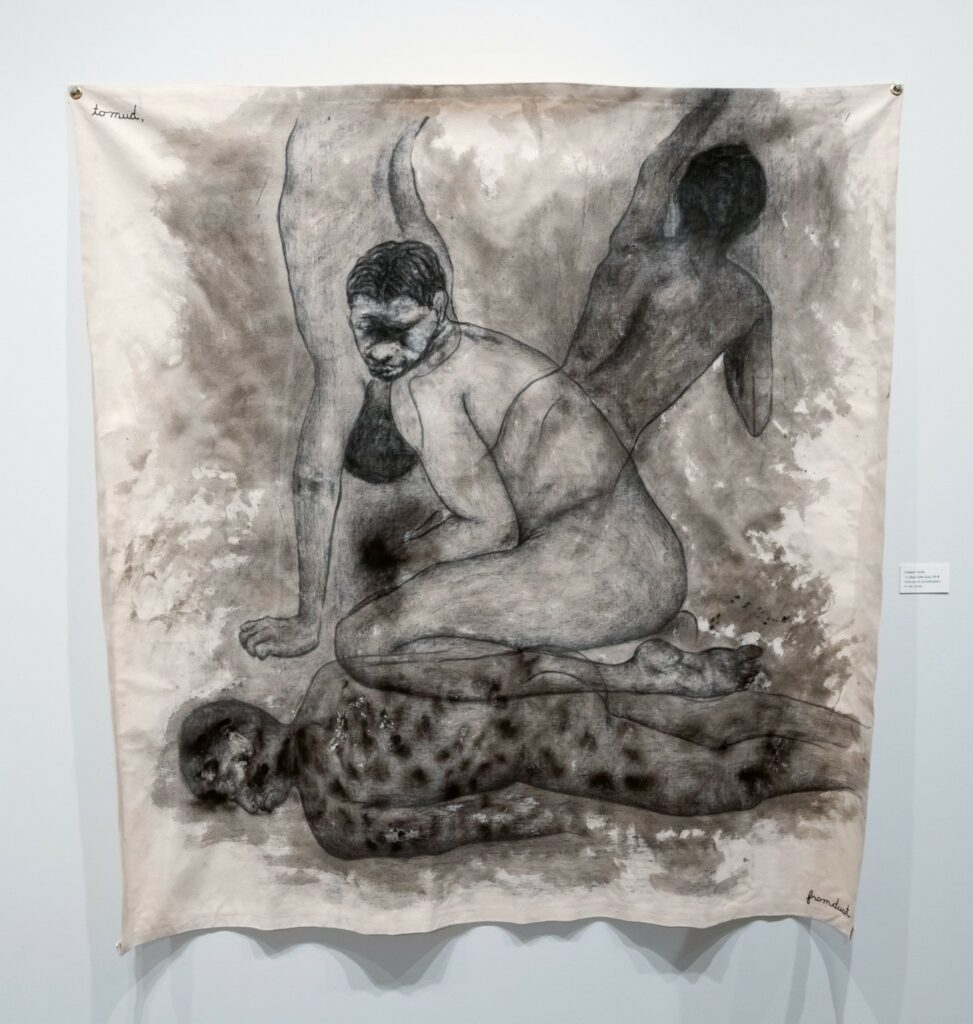
Who are some of your art inspirations? What are some of your non-art inspirations?
I am heavily inspired by the Color Field painters, including Sam Gilliam, Frank Bowling and Helen Frankenthaler. I am struck by their ability to capture emotion so strongly through just the use of color and form, and I can feel the joy that resonates throughout their work. Outside of visual art I am inspired by a range of musicians, including Sarah Vaughan, Kendrick Lamar, Slowdive and Chihei Hatakeyama just to name a few. And, of course, I am continually inspired by the people who are close to me in my life including my family, friends and professors.

When do you know when a work is finished?
I tend to work on paintings over an extended period of time and sometimes I’ll return to works after several days or weeks to retouch or change different elements. Often times during the painting process, I’ll get stuck on a certain section or the whole piece will be too loose, and I’ll end up sticking it in a corner somewhere until I muster up the courage to face the problems at hand.

Tell us about your process when working. Do you have any rituals to get yourself ready to make art?
When I’m working, I usually listen to music. I like to listen to music that has some sort of repetition to keep me in a sort of flow when I work. Most often it’s ambient drone music or house music. I usually let the paint on my palette dry between sessions, so I start most sessions by scraping off the old paint. It’s strangely a meditative process that gets my mind in the mood for working.
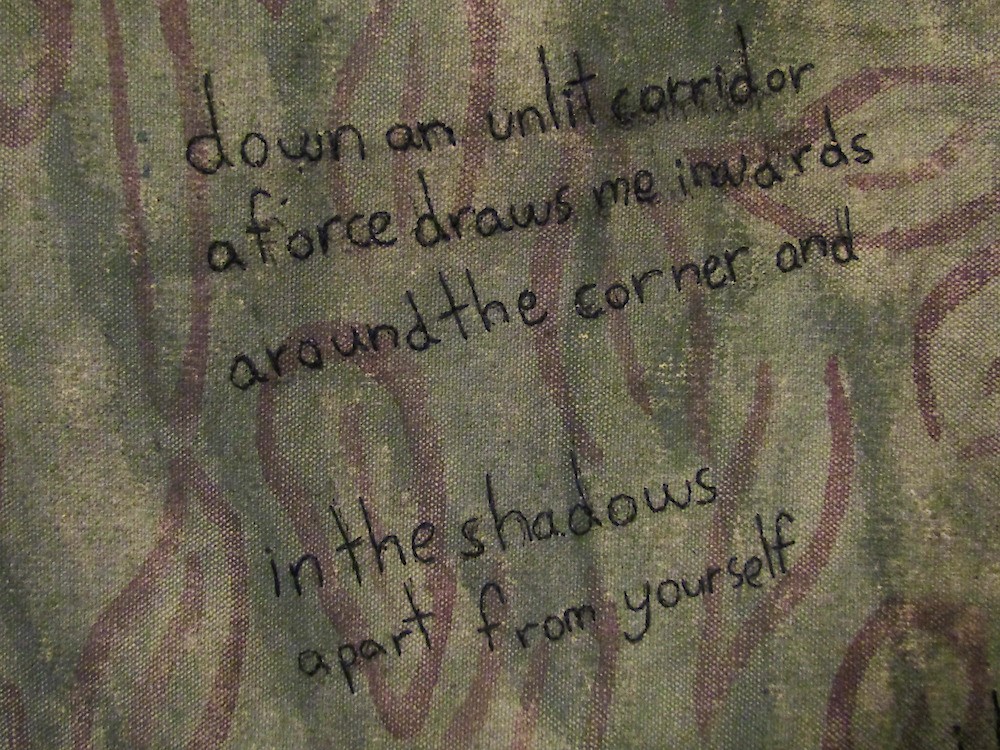
What are the meanings and the concepts behind this particular body of work?
The body of work that I am currently making is about the journey to self-discovery. I am interested in the presence of the gaze in historical painting and I attempt to redirect that gaze outward from the surface of the painting to the viewer. Often times, we learn the most about ourselves from the people around us and perhaps from multiple sets of eyes looking at you at once, it is possible to determine your true place in the world. Works like, “your skin behind the lattice” are about a peeling back of layers, a reconciliation of the different parts that make someone whole. Other works such as “heading into the green vastness” are invitations for the viewer to take a journey deeper into the works and uncover something about themselves. I attempt to entice viewers into a closer inspection of the works by juxtaposing the large scale of the canvases with small embroidered details and text on the surface. The small series of untitled portraits of children reflect on the mysteries of one’s identity during transitory stages of life.
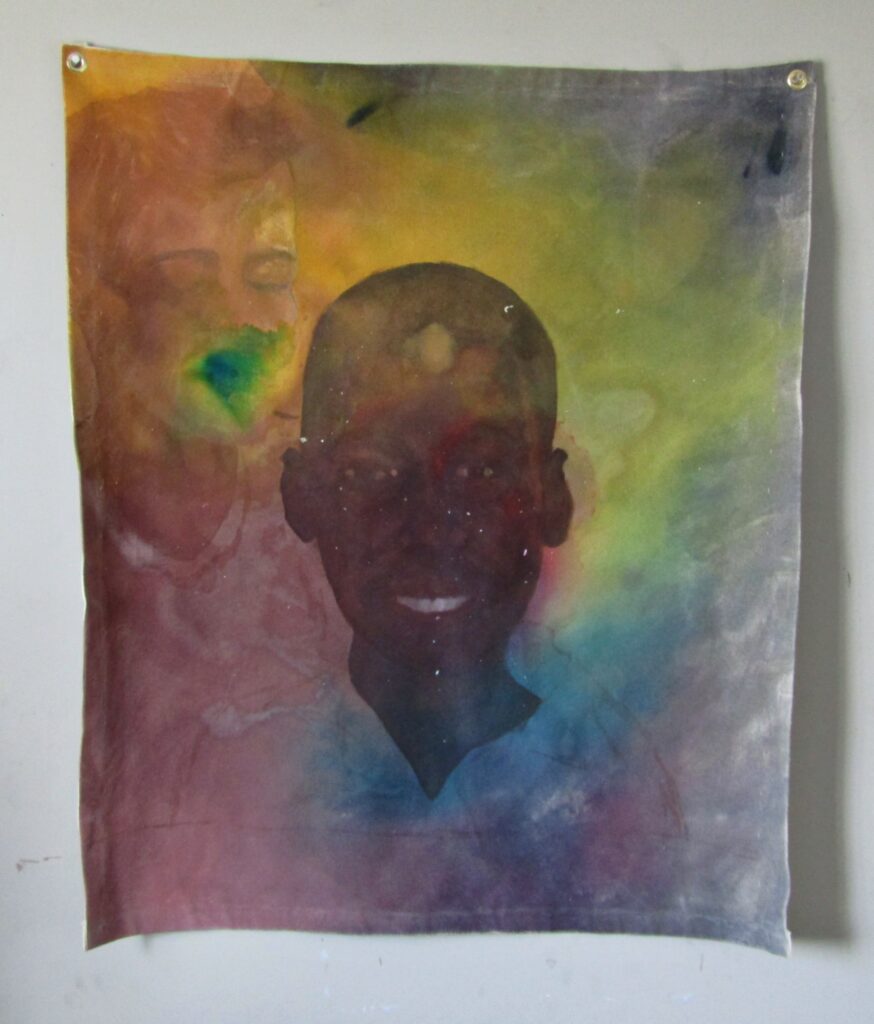
What do you want viewers to take away from your work?
My hope is that viewers of my work will be invited to reflect on the different parts of themselves that make them whole, and to foster a sense of reconciliation within the viewers to understand and accept the joys that come from difference.

What are your biggest goals as a visual artist? And what has been your proudest moment professionally?
My biggest goal as a visual artist is to create work that transcends myself and resonates with other people. My proudest moment thus far is being the regional winner of Alberta for the BMO 1st Art award in 2019. I am extremely humbled to be in the presence of such great artists, and I am pleased that my work was well received.
Follow Preston Pavlis on Instagram at @prestonpavlis
